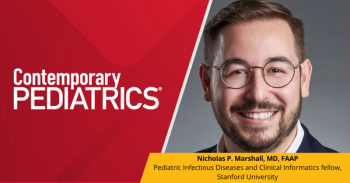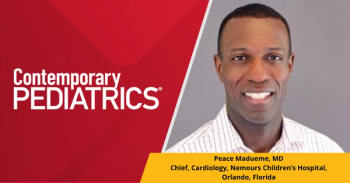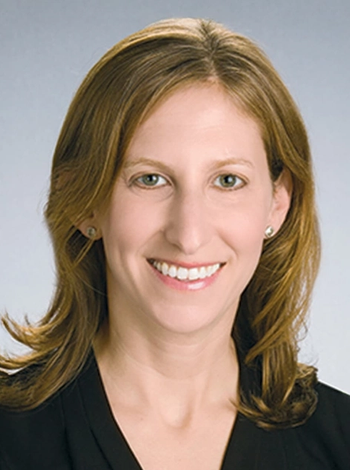
- April 2023
- Volume 40
- Issue 03
The Great Resignation: Survival strategies for pediatric practice
Despite significant staffing shortages and increased workloads, medical practices can thrive by learning how best to do more with less.
Pandemic burnout and the great resignation
According to 2 surveys from The Physicians Foundation published in 2020 and 2021, 8% of medical practices closed, 32% of practices had to reduce staff, and 49% of physician experienced a reduction in income.1,2 Additionally, the US Bureau of Labor Statistics reported that health care workers were leaving the industry at a rate of 500,000 per month during 2022,3 with Elsevier Health reporting that 47% of US health care workers plan to leave their positions by 2025.4 Many physicians took government loans and or pay cuts to keep their practices afloat. When practices reopened after the lockdowns, patient volume took many months to return to prepandemic levels.
But, in fact, before the pandemic, physicians were experiencing significant symptoms of burnout associated with loss of enthusiasm for work, negative feelings, and low sense of accomplishment. Primary drivers of physician burnout included having too many administrative tasks, spending too many hours at work, trying to understand and navigate electronic health records (EHRs), having too many difficult patients, and having too many appointments in a day.1-3,5 Obviously, burnout was not limited to physicians but affected associate providers, nurses, and office staff as well.
Over 230,000 physicians, nurse practitioners, and physician assistants quit their jobs by the end of 2021. It was not just physicians who experienced stress and burnout. It has been estimated that 30% of nurses left their jobs and the health care industry lost 20% of its workforce by the end 2021. 6,7 Thus, the “Great Resignation”is considered 1 of the most significant sequalae of the COVID-19 pandemic and it is now 1 of the most challenging problems medical practices face today.
The Great Resignation today
As I write this in February 2023, we continue to wear masks in our offices, work with significant clerical and clinical staff reductions, see more patients daily than we did prepandemic, and regularly see patients with mental health issues who need therapy. Physicians and staff are even more at risk for burnout than ever.
However, there are many practice transformations that can help overcome problems related to all of this. The modifications described below will enable providers to see many patients with fewer staff. These will improve practice efficiencies, reduce burnout, and keep providers looking forward to working each day. We need to reinvent our practices and create a better medical home for our patients. For many providers, this is long overdue and should be seen as an opportunity rather than a hardship.
Reinventing a practice: The 10-step program
Step 1: Analyze problems
If you can identify and resolve even a few practice problems, you will find that you can run a very efficient office with fewer clinical and nonclinical staff. To accomplish this, providers need to take a good objective look at their practice via team meetings with providers/managers and staff. Involving staff in overhauling your practice is a great way to build morale and reduce burnout.
At these meetings you need to identify what your practice is doing right, what it is doing wrong, and what elements of the practice could or should be improved. Once identified, one can assign an individual or a team to analyze the problem and suggest remedies if the meetings do not produce a solution. Always look for low-hanging fruit that requires minimal effort to fix (ie, using a text messaging service to remind patients of next-day visits). Whenever something is changed, continue to monitor the solution to see if it is effective or ineffective, or warrants further changes.
Step 2: Hire appropriate staff positions and keep them happy
Be sure to limit the clerical duties of your clinical staff. For many clinical positions, a practice may not need the skill set of a registered nurse (RN) or licensed practical nurse (LPN). Generally clinical staff needs to room patients, take vital signs, call pharmacies, administer vaccines, and contact patients with clinical advice. In most situations a medical assistant (MA) can assume the duties of a RN or LPN, and one can utilize a licensed nursing assistant (LNA) for clinical care. Check with your state board of nursing LNA scope of practice guidelines. In my state of New Hampshire, for example, trained LNAs can take vital signs on patients of all ages and administer vaccines to children over aged 12 years.
Realize that clinical and nonclinical medical office staff are available and often abundant in your community but you must be prepared to pay higher wages than you did in the past (Table) and even consider providing a signing bonus if a hire stays for an agreed period of time. You need to determine what salary rates and benefits are being paid by your competitors and be prepared to meet or beat their offers. Be aware that flexible schedules such as half shifts are attractive to family-oriented staff. Consider hiring part-time staff as well; these are desirable because part-time workers receive few if any benefits.
Most importantly, attempt to keep staff happy, monitor stress levels, and make every effort to be a supportive manager.
Step 3: Use telehealth visits whenever possible
The pandemic has taught physicians how to use telehealth (TH) virtual visits effectively. Many visits, such as for rashes, mental health and attention-deficit/hyperactivity disorder medication checks, weight checks, conjunctivitis, and follow-up illness visits, are quite appropriate for virtual care. From the practice perspective, these visits take little time, require no rooming or office disposables, and are paid and coded the same as in-office visits. One can see more virtual visits in an hour than one can in-office visits. In addition, complicated questions posed by patients sent via phone or portal can be handled by creating an ad hoc virtual visit so providers are appropriately compensated for time resolving complex issues. There are now many physicians who limit their practice to virtual visits.
Step 4: Optimize staffing duties and staffing levels
Depending on staffing levels, you may need to alter your patient flow pattern. In addition to secretarial/clerical/billing staff and an office manager, most practices find that 1 clinical staff member can room 2 patients comfortably.
Patients should be encouraged to use EHR portals to check in before the visit, confirming insurance coverage and medications as well as demographics. Any age- or condition-related questionnaires should be filled out while the patient is in the waiting room. Consider using a service like the Child Health and Development Interactive System to score these forms automatically so results can be reviewed and discussed at the time of the visit. Rooming staff can be most efficient if each exam room is equipped for taking vital signs appropriate for the age of the child. If a vision or hearing screen needs to be done, use a portable device that can be used in the room and take finger-stick blood samples and throat or nasal swabs in the room. In addition, prior to a well office visit, vaccines can be drawn up by a medical assistant or nurse so they can be administered by the provider. Each room should be equipped with a computer station and printer so physicians can provide parents or patients with handouts, prescriptions, and physical forms.
Step 5: Document efficiently and consider office scribes
One of the most frustrating tasks associated with office visits is completing visit notes. This is 1 of the leading causes of provider burnout. In January 2021 the Centers for Medicaid & Medicare Services (CMS) significantly changed the requirements for documenting office visits. The updated CMS guidelines are based only on (1) a clearer method of assigning medical decision making or (2) a new methodology for assigning a time component to the visit on the date of service. This means that notes can be brief, yet thorough, to document appropriately for the level of service billed. One can use voice dictation or EHR templates to speed note completion. Additionally, medical scribes can be hired for about $15 per hour plus benefits. Using scribes will speed documentation, enabling providers to see more patients each day. Alternatively, virtual scribes using a smartphone application can be used to expedite office documentation. These services cost a flat rate of about $13 per hour and notes are typically available at the end of the day for review and signature.
Step 6: Avoid or expedite prior authorizations
One of the greatest wastes of provider time is getting prior authorizations (PAs) for medications or diagnostic testing. Experienced providers have learned that there are ways to avoid the need for prior authorizations. This is best accomplished by becoming familiar with insurance company formularies and requirements for diagnostic testing. If a pharmacy contacts your office requesting a prior authorization, simply ask what medications are covered by the patient’s plan and prescribe what is covered unless it is necessary to pursue a PA. By using this method, you avoid wasting your time and the pharmacist’s time while ensuring that the patient gets an appropriate medication in a timely manner. If you need to obtain a prior authorization, consider subscribing to any of several electronic PA services such as CoverMyMeds.com, Waystar.com, or Agadia.com, among others. In the case of diagnostic testing, familiarize yourself with the insurance companies’ requirements for authorization. For example, if you wish to get an MRI on a child presenting with frequent headaches, be sure to document that the patient meets criteria to justify obtaining an MRI, such as focal neurologic signs, headaches worsening with positional changes or with cough or exertion, or progression in severity or frequency.
Step 7: Enforce a no-show policy
It is imperative that the practice maintain a strict no-show policy. Given how busy practices are these days, each appointment slot is precious and must be used. Consider charging patients after the first missed appointment and discharging patients who are frequent abusers. If a patient is more than 15 minutes late, offer patients the opportunity to reschedule or if your schedule allows, allow them to wait until they can comfortably be fit in.
Step 8: Triage/scheduling
Given that even the most efficient practice can accommodate just so many patients per day, make every effort to have enough open slots to accommodate same-day visits in addition to routine well visits. Over time you will learn how many should be available depending on the season. Providers work at different speeds so be sure to have providers indicate how long their appointment duration should be for well and sick visits. Also consider that your practice will receive many calls each day regarding medication refills or medical questions as well as for appointments. An efficient practice will make every effort to reduce the burden of these on the clinical staff. Educate your patients to self-triage using the Pediatric SymptomMD application or integrate this affordable application into your practice website. Requests for medications or appointments as well as bill payments and nonurgent messages for providers should come via your EHR practice portal. Consider having your administrative staff use the SymptomScreen service so they can screen most incoming appointment calls for appropriateness without bothering the clinical staff or providers.
Step 9: Improve communication with patients
Use a Health Insurance Portability and Accountability Act (HIPAA)–compliant text messaging service like SimplePractice or DoctorConnect to streamline communication with patients. These services allow you to text encrypted appointment reminders to patients to reduce no-shows. Unlike with phone call reminders, patients will not encounter a mailbox full problems. These applications allow patients to fill and send forms and fill out after-visit surveys, and can integrate TH services into their applications. If you’re in the market for just an encrypted, HIPAA-compliant email service, consider Hushmail, which enables practices to send and receive email from patients and supports 2-way form transmission as well as electronic signatures. By reducing an office’s paper chase you will save an enormous amount of time a medical practice squanders every day.
Step 10: Monitor and resolve burnout
It is important to determine if you suffer from professional burnout or are at risk for developing burnout. You can take a version of the Maslach Burnout Inventory online at www.mindgarden.com/117-maslach-burnout-inventory for $15. There are many online resources available to help providers and staff deal with this issue. The American Medical Association (
have great online resources for monitoring and preventing burnout.
BIO
Andrew J. Schuman, MD, is a clinical professor of pediatrics, Geisel School of Medicine at Dartmouth, Hanover, New Hampshire, and a member of the Editorial Advisory Board of Contemporary Pediatrics®.
References
1. 2020 survey of America’s physicians: COVID-19 impact edition. The Physicians Foundation. September 2020. Accessed February 19, 2023. https://physiciansfoundation.org/wp-content/uploads/2020/09/2020-Physicians-Foundation-Survey-Part2.pdf
2. The Physicians Foundation 2021 physician survey: COVID-19 impact edition: a year later. The Physicians Foundation. June 5, 2022. Accessed February 5, 2023.
https://physiciansfoundation.org/physician-and-patient-surveys/the-physicians-foundation-2021-physician-survey/
3. Economic news release. US Bureau of Labor Statistics. Modified February 1, 2023. Accessed February 22, 2023. https://www.bls.gov/news.release/jolts.t04.htm#jolts_table4.f.2
4. Clinician of the future: report 2022. Elsevier Health. March 2022. Accessed February 22, 2023. https://www.elsevier.com/__data/assets/pdf_file/0004/1242490/Clinician-of-the-future-report-online.pdf
5. 2022 survey of America’s physicians: part three of three: assessing the state of physician practice and the strategies to improve it. October 2022. Accessed February 5, 2023. https://physiciansfoundation.org/wp-content/uploads/2022/11/PF22_Brochure-Report_Americas-Physicians-Part-3_V2b.pdf
6. Strengthening the health care workforce. American Hospital Association. November 2021. Accessed February 17, 2023
7. Mensik H. Over 200,000 healthcare workers quit their jobs last year. Healthcare Dive. October 26, 2022. Accessed February 17, 2023.
8. US Bureau of Labor Statistics. Occupational employment and wage statistics. Accessed February 27, 2023. https://www.bls.gov/oes/current/oes291141.htm
Articles in this issue
over 2 years ago
Donna Hallas says follow these steps to improve your NP practicealmost 3 years ago
Infantile spasms: A frontline guide for pediatriciansalmost 3 years ago
Juvenile spring eruption in a young boyalmost 3 years ago
Kudos to WHONewsletter
Access practical, evidence-based guidance to support better care for our youngest patients. Join our email list for the latest clinical updates.








